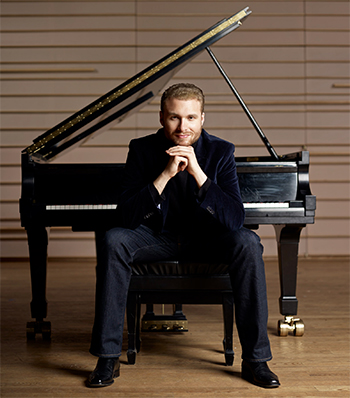by Rory O’Donoghue

“For many years I was in love with La mer and I yearned for a way to perform it,” Golka said by email, “and though I played around with the idea, it became clear that a two-hand solo version would have too many compromises. There is no way one pianist could bring out all the gorgeous textures and layers of the orchestral score, and each detail is so utterly exquisite.”
La mer premiered in Paris in 1905 to a middling reception, but gained traction over the next few years and secured an enduring place in the orchestral canon following its second Parisian outing in 1908. Its evocative movement titles — “De l’aube à midi sur la mer” (“From dawn to midday on the sea”), “Jeux de vagues” (“Play of the Waves”), and “Dialogue du vent et de la mer” (“Dialogue of the wind and the sea”) — offer ample room for interpretation, and Debussy’s deliberate avoidance of calling it a “symphony” in favor of “three symphonic sketches” all contribute to the work’s enigmatic beauty.
“Debussy made a four-hand version himself, and while it is of course masterful, it deliberately foregoes many ideas in the full score,” Golka said. “I became curious how I could translate all the orchestral sonorities to two pianos, particularly since the use of two sustaining pedals opens many textural possibilities. Not to mention the extra spatial dimensions arising from the pianos facing each other.”
He first transcribed the score meticulously and honored each of Debussy’s articulation, dynamic, and tempo indications. “I decided not to inhibit myself from special effects that came to me while improvising and experimenting. Ones which Debussy never would have used — plucking strings, dampening strings with the palms, using fists on the keyboard, silently depressing a chord on one piano and sounding the strings from the resonance of the other, and in particular, keeping the first piano entirely shut and then opening it to help create the sensation of the sun emerging over the ocean in ‘From dawn to midday on the sea.’”
Following this exciting prelude, Turning/Tipping points will begin at 7:30 pm with a program organized around pivotal moments in each of the featured composer’s lives. The concert opens with Louise Farrenc’s rarely performed Clarinet Trio in E-flat, Op. 44 (1861), a delightful gem of a piece showcasing lush harmonies and playful melodies. Paul Hindemith’s Viola Sonata, Op. 11, No. 4 is next, which he wrote after serving in the First World War. Brahms envisioned his jubilant String Quintet No. 2 in G, which closes the evening, as his crowning achievement and nearly retired from composing after its conclusion before he was lured back into the craft by his “dear nightingale,” clarinetist Richard Mühlfeld.
Tickets are available here.
Published on ClevelandClassical.com June 10, 2019.
Click here for a printable copy of this article


